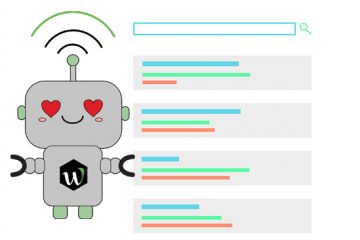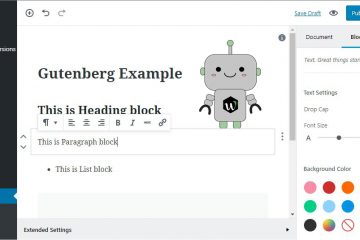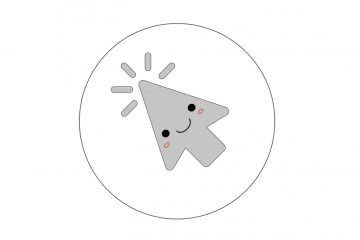[vc_row][vc_column][vc_column_text]People genuinely like me, the SEO guy, and hate my coworker who works on the paid side of things (AdWords). It’s not surprising. If you can get good results for free, why would you want to pay for it? This should be the starting point for any growing business. There are many strategies you can use to build your brand on a budget. We have taken the time to help you on this front by providing you, the small business, with some of the simplest and cheapest strategies you can start implanting today to build a stronger brand.
Finding Your Niche
As a local business, you might feel overpowered by the top dogs like Amazon, but it’s pretty easy to compete if you want to focus on a local level. No one wants to wait 5-7 business days, or even 2-day free shipping if they can have something right now. The important thing is that you have really thought about your niche and what you should be adverting locally. Once you have that step-down, you can start building your surrounding audience and become the local hub of your niche.
Our best policy is to search your main keywords and see who is beating you when it comes to local SEO. If you’re a coffee shop and you search the term “Coffee Shop” “Coffee Shop Near Me” or simply “Coffee” you should show up first because of proximity. If not, take a look at your competitor’s page and see what they’re doing right. It could be anything from the speed of their site to the verbiage they use; dissect them and really learn what makes them tick, you can always improve on what other people have already built.
Low Budget Branding
The biggest mistake that you can make is ignoring branding early on for the sake of immediate sales. Of course, that’s a big concern if you’re just starting out. You need sales to have a business. However, you can work on both. If you want to stay above water and succeed in the long run, you need proper branding. This would include things like your logo, social media accounts, blog, tagline, etc.
A good tip for branding is simply sharing what you know. That’s what we’re doing right now! Going back to the coffee shop example, you could start a blog that tells people how to properly roast beans, what makes a quality bean, and so on. People that want to do it themselves will spread the word, giving you free brand recognition. You would then spread your blogs through your social media accounts.
Quality Content
It’s no secret that a big part of SEO is what you say in your written content. Not only do you need to write things that people will love and engage with, but you also have to speak the language of search engines (Content SEO). Finding the right balance between entertainment and SEO is the perfect way to start ranking and stay in the top spots for local search results.
When writing your content, your key focus should be on what makes your ideal audience happy. What information can you provide that reinforces your brand. Maybe your niche is coffee that has been carefully sourced and curated from a specific tropical climate, making the beans extraordinarily potent for strong coffee. If that’s the case, you need to take your customers there digitally. In your “About” section, include high resolutions pictures of the region, a handful of dark, luxuriant beans that makes your customers want to pry open a bag and smell the rich coffee odor! You get the idea with visuals, but the words matter too. You need to make sure you’re including your keywords, “Artisan Coffee” “Hand-Picked” “Quality Beans” “Rich Flavor Coffee.” This requires a lot of research to narrow down the actual keywords, but the main point is that you need to include them in a way that entices the reader and makes sense to search engines.
Our recommendation is to use mid-tail keywords (keywords that include an extra phrase) for your local business. For example, it would be hard to rank for the keyword “Coffee Shop” or “Coffee” at first because you’re new and have a lot of competition. However, maybe you’re located in downtown Glendale in Phoenix Arizona so you can go after the mid-tail keyword “Glendale Coffee Shop,” since there are only so many in that part of town.
When you get your main pages written, you can start using long-tail keywords like “How to Properly Brew Rich Peruvian Coffee Beans,” which would fit nicely for a blog article. This way, the smaller group of people looking for keywords in that longer phrase is more likely to come to you. Take a look at the pyramid below to get a better idea of the structure you should use.
Keywords
Home Page: “Name of Company” “Coffee Shop”
Category Pages: “Type of Coffee Bean” “Where they are Sourced”
Blog: “How to Properly Brew Rich Peruvian Coffee Beans”
Now you should have an understanding that the home page should use keywords that you want to rank for and the further you go into your website, the longer your keyword or phrase should be (while maintaining the core keywords). Notice how the long-tail key phrase for the blog still contains the word “coffee.”
Social Media
Many have wondered if social media, like Facebook, is worth the investment; can you really get conversions for your product or service through this medium? Short answer, yes, long answer, but that’s not really the point. What you get in conversions from social should be considered “extra.” Your social media presence should be seen first and foremost as a brand builder. Think of it this way. Let’s say you sell different varieties of coffee through your Facebook shop and that’s your main goal. People will see your image and maybe they’ll buy it, maybe not. However, over time, you will see that people will start to get bored of seeing your ad over and over again.
You need to consider what makes a brand, what makes your company’s identity stronger than the competition. The right way to use social media is to create crisp visuals of where you get your coffee beans (if they are from a unique source), how your company designed your logo, interviews with the SEO talking about what makes your coffee company different.
From another perspective, what makes an Apple computer more expensive than any PC? Branding. Time and again you have people saying that cheaper PCs outperform Macs in every regard, yet Apple charges more than twice what the average PC costs and gets away with it. How is that even possible? It was all just branding. Apple became the computer that the artist uses, the creative minds, the geniuses. Everyone wants to feel unique and Apple gave them a product that was geared to do just that. Now, of course, there are other factors. The interface Apple uses is much simpler and easier to use. You can’t do as much on a Mac, but for the average person (most consumers) simplicity and convenience are more important. The point is that you don’t have to be a major tech company to apply these strategies. You just define your brand by what makes you different and constantly announce that fact through social media, providing evidence for why that is and crisp visuals that make it look more authentic.
Local Ranking
You should have hit in this in the keywords, but search engines are always looking where to place you on local results and you can help them out with this information. The easiest way to do this is through Google My Business, which is a free resource in which to tell Google about your business, verify that you’re a legitimate business, and the end result is your appearance on local search results. Sticking with the coffee example, search “Coffee Shop” on your phone right now! You should get something like this.
By completing the Google My Business process, your business will start showing up on here which is the easiest way to start getting noticed locally.
Ratings and Reviews
As a company on the rise, you need to take customer satisfaction into consideration. Platforms like Google My Business and Facebook allow people to leave reviews. When people see that magical 5-star rating, they’re more likely to trust your site and give your business. Make sure you maintain customer satisfaction and your ratings for all these platforms.
Most people will look at a negative review and ignore it. That’s a big mistake. You need to see why the customer left that review and respond by rectifying the mistake. After a fixable issue has been resolved, you can ask them to change their review.
Conclusion
You essentially have to be a renaissance man if you’re going it alone. You need to come at branding at all angles if you want to succeed. The good news is that it doesn’t have to cost you an arm and a leg. In fact, most of the services I listed above are free.
If you need help with Low Budget Branding, call the experts at WebCroppers today.
[/vc_column_text][/vc_column][/vc_row]




